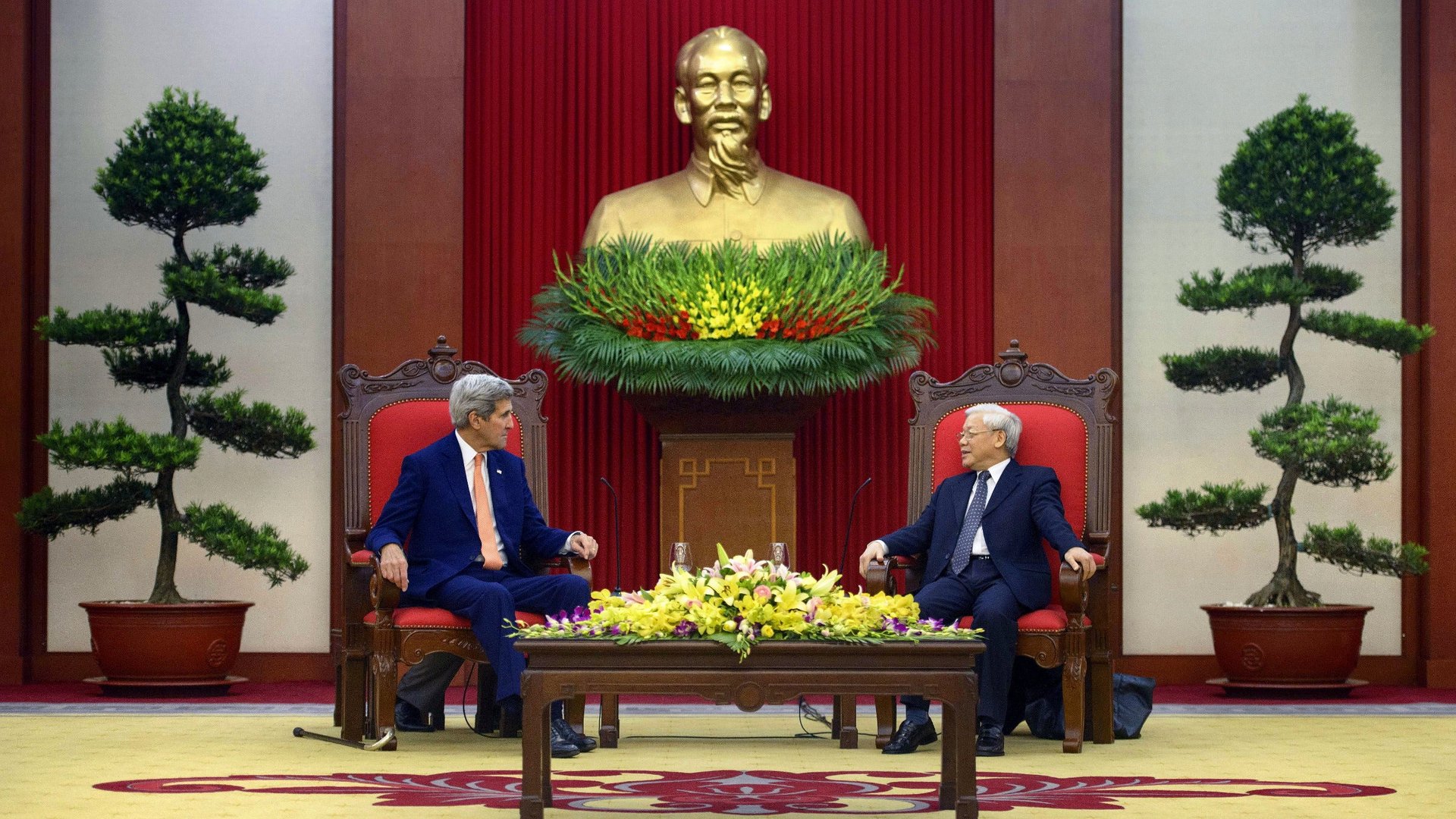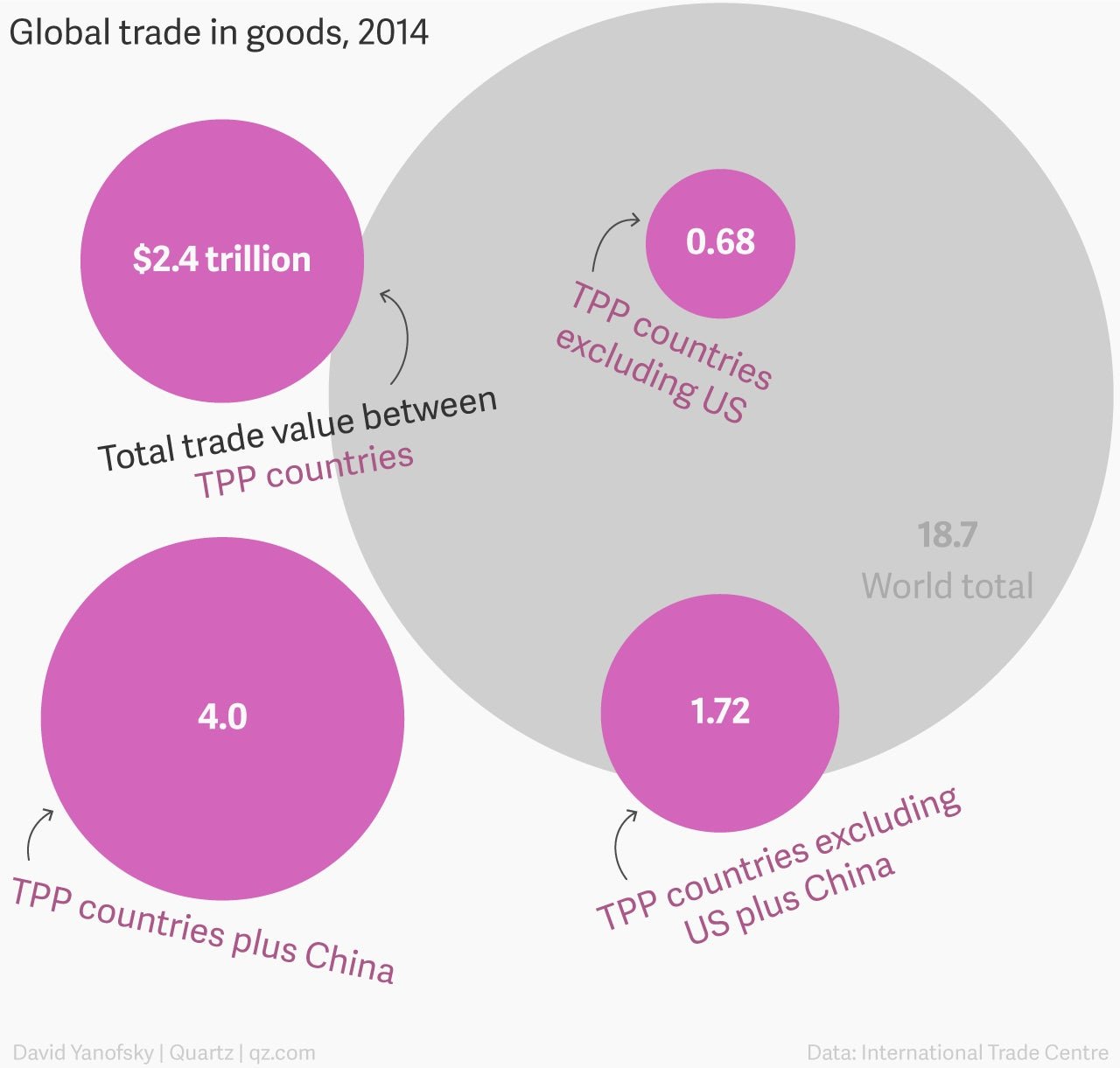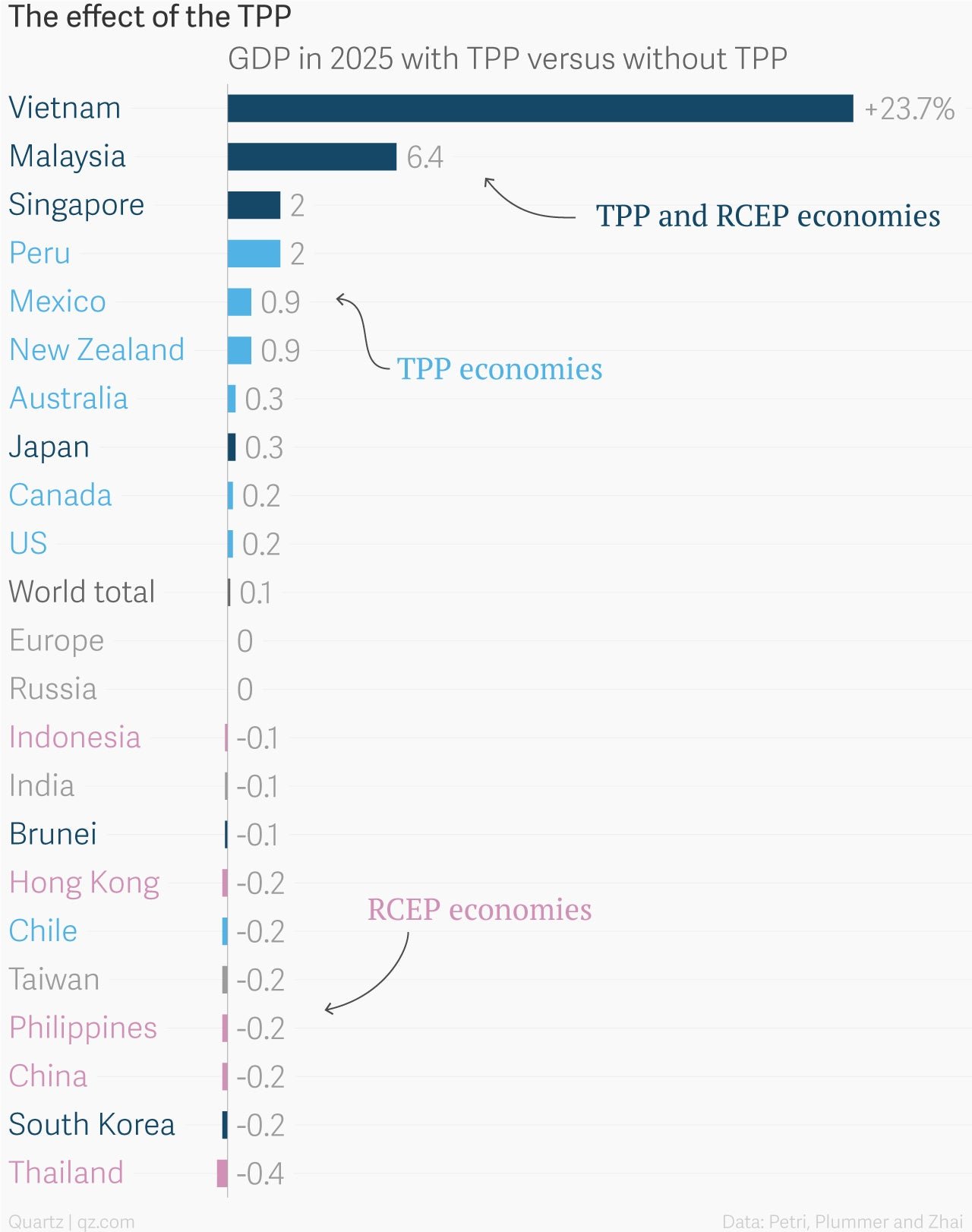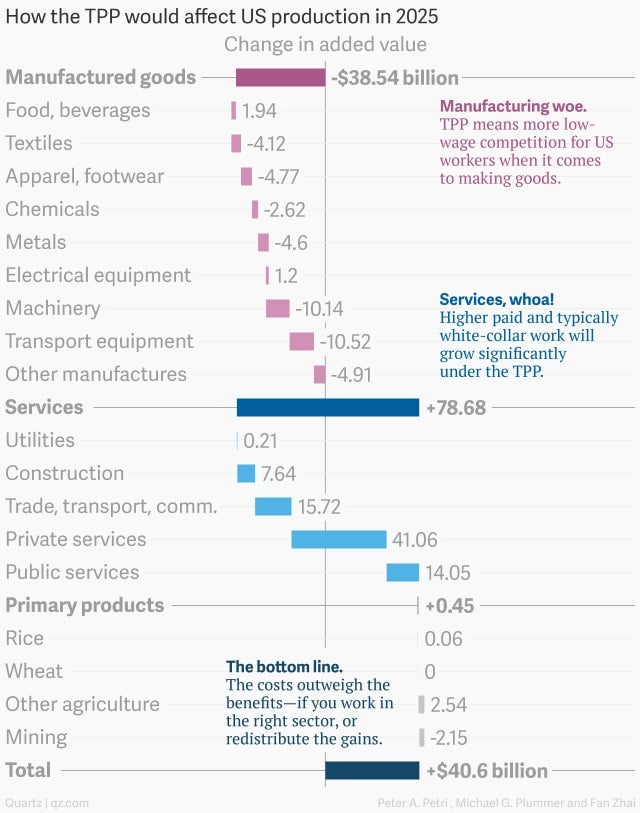Charted: What the landmark Trans-Pacific trade deal really means
Trade ministers from 12 Pacific rim countries, including the US, Japan, Mexico and Vietnam, came to terms Monday on the Trans-Pacific Partnership, a landmark free-trade deal that’s being described as the most ambitious in a generation. What exactly does it all mean?


Trade ministers from 12 Pacific rim countries, including the US, Japan, Mexico and Vietnam, came to terms Monday on the Trans-Pacific Partnership, a landmark free-trade deal that’s being described as the most ambitious in a generation. What exactly does it all mean?
If the participants all ratify the treaty and bring it into force, tariff barriers will go down, lowering the cost of trade between them. But the treaty also deals with a vast array of other laws that affect business, including setting standards for labor and environmental regulations, the treatment of intellectual property, and how foreign firms can challenge decisions by national governments.
All these moves are intended to spark economic growth in the nations involved, and potentially counter China’s domination of global manufacturing. But critics fear that the accord, negotiated largely in secret, could also give corporations too much power at the expense of workers and individual nations.
We’ll have to wait for the release of the accords to see how close their fears are to reality. In the meantime, here are a few charts that show the scope of the treaty. It has often been described as a deal that affects “40% of the world’s economy,” but that figure is simply a calculation of GDP of the countries involved. The actual goods trade affected by the TPP is closer to 13% of the global total:

One reason trade fans care about the new standards is that they raise the bar for a large chunk of global trade (including services, which aren’t shown in the chart above) at a time when attempts to iron out new trade rules for the entire globe remain totally stalled.
Another thing to understand about this trade deal is that it is enmeshed in the fraught politics of China’s economic rise. To gain political backing in the US, the Obama administration has portrayed the deal as a way to box China into high trade standards and reward US allies in the region. But the end-goal for trade advocates is to get China into the TPP, not box it out. And with China developing its own style of trade pact within Asia, the Regional Comprehensive Economic Partnership, there’s hope that the competing blocs could push each other to improve standards in areas like labor rights and state-owned company reform.
As it stands, here is how the TPP is forecast to change national production in participating nations by 2025, compiled by three economists who have spent several years developing a model for such forecasts:

As you can see, the big winners are Vietnam, Malaysia, and Singapore, countries that stand to gain a good deal by expanded market access. The US doesn’t gain that much because its economy is so big and open already, while countries that are left out of the pact will tend to see reductions in the size of their economy as exports move to more efficient channels.
So what does that .2% increase mean for the United States? Largely, it means doubling-down on the shift in the US economy from low-skilled jobs to high-skilled ones. If the economists are right, that means more manufacturing going overseas, but more higher-skill—and higher-pay—service jobs in the US. And while these numbers look big, some perspective is in order: That nearly $40 billion reduction in manufacturing output represents just 1.4% less than what would otherwise have been produced.

To understand why the deal will suck manufacturing jobs away from the US and other advanced economies, you only need to look at this chart of manufacturing and minimum wages in the various member countries to see why a company might choose a factory in Vietnam over one in the US:
The only country in the deal missing from our chart is Brunei, because reliable wage statistics are hard to find thanks to the country’s practice of relying on (and, critics say, abusing) migrant labor—just one reason some labor groups don’t think much of the TPP.